- Home
- Tony Hillerman
Seldom Disappointed: A Memoir
Seldom Disappointed: A Memoir Read online
Dedication
To Marie, who wanted me to do this,
and to all you other writers, wannabes,
shouldbes, willbes, and hadbeens included,
I dedicate this effort. You’re the ones who
know it ain’t easy. May you get as lucky as
I have been.
Contents
Dedication
1 Papa’s Melon—and What Happened Next
2 Preparing for War
3 Boy to Man
4 The Second House
5 Considered Educable
6 Mama
7 The Adventure
8 Charley Company
9 The Sentimental Journey
10 At Last, the Real War
11 Crossing the Vosges
12 How to Get a Bronze Star Without Knowing Why
13 Life in the Mertzwiller Convent
14 The Worst (of Course) Winter Ever
15 Halls of Ivy
16 Now the Good Life Begins!
17 Death Watch at the Morning Press
18 Life in the City Different
19 Stranger in the Ivory Tower
20 Janet, Tony, Monica, Steve, and, Finally, Dan
21 Inside the Ivory Tower
22 Doer of Undignified Deeds
23 Crazy Bus vs. the Organization
24 The FAQs
25 Life Among the Flower Children
26 Back to the Dineh
27 That Detour to Zuni
28 Breakout Book
29 Finally Finding Moon
30 El Fin
Photo Insert
Addendum
Bibliography
About the Author
Praise for Seldom Disappointed
Also by Tony Hillerman
Credits
Copyright
About the Publisher
1
Papa’s Melon—and What Happened Next
Outside on this New Mexico morning the dandelions add festive color to our yard while I sit inside casting back in my memory for autobiographically useful material. I intend this to be a recitation of good luck and happy outcomes but my mind turns up only fiascos and misfortunes.
The first memory popping up is of sitting on our front porch in Sacred Heart on a torrid Oklahoma Sunday watching Papa trudging up the section line carrying a huge Black Diamond watermelon. The Black Diamond is the most delicious fruit known to humanity and this was more than a normal Black Diamond. Papa had been nurturing it all summer on the Old Hillerman Place, picking off competitive melons and, when it wilted, helping it along with a couple of lard buckets of water in one of his agronomy experiments. The previous Thursday he had declared it ripe and rigged up a little arbor of sticks and leaves to give it cooling shade. He announced that after Mass Sunday he would carry it home, put it in a washtub of well water to chill it, and when the cool of twilight came we five Hillermans would eat it, inviting anyone who happened to pass on our dusty street to come in and have a slice.
Alas, it was not to be. During the long walk in the humid heat Papa’s perspiration had made the melon slippery. As he reached for our gate latch it slid from his grasp, crashed to earth, and shattered. I recount this incident, trivial though it sounds, because seventy something years later I still recall my reaction was as much confirmation as sorrow. At some level in my psyche even then I had sensed that this Black Diamond was too good to be true. I must have mentioned this to Mama when she was comforting us kids, because it’s the first time I recall hearing her favorite aphorism.
“Blessed are those who expect little,” Mama would say. “They are seldom disappointed.”
I was about five then and probably didn’t appreciate the doubled-edged irony in that beatitude. Looking back at life, I find I have often received more than I ever expected and suffered less than my share of disappointments.
The absolute earliest memory I finally managed to retrieve also involved a fiasco and, like so many to come, it produced a positive effect. I was sitting on one of those little hills red ants form of the tiny bits excavated from their tunnels. We were living on the Old Hillerman Place then, which means I was a toddler. I was scooping up sand and pouring it into the ants’ exit hole. Why? Perhaps to block this passage and keep occupants from swarming out to attack me. Alas, those already out were crawling all over me, biting away. Before Mama heard my howls and rescued me, I had accumulated enough bites to make this incident a sort of family legend.
The next affair that pops from the memory bank is the dismal afternoon at Oklahoma A&M when I fell so soundly asleep in College Algebra that I toppled from my chair into the aisle and the professor sent me off to get a drop card. Turning away from that, I dredge up the terminal night of my career as an infantryman when I had gone along on a dinky little raid intended to capture two German prisoners. My role was to tote the stretcher on which we would carry a captive in case we wounded him. Instead I rode back on it myself. Part of the way, that is. The fellow carrying the front end stepped on an antipersonnel mine, which killed him and broke the stretcher. I’m a little hazy about the rest of that trip, recalling the final lap was made with me the passenger in a “fireman’s carry” formed by a couple of friends, recalling being dropped into a frigid February creek, reviving while being strapped onto a stretcher on a Jeep, and being aware I was going somewhere to get some sleep.
Next to come to mind was my original literary agent delivering her verdict on my first novel. Don’t want to show it to anyone, she said. Why not? It’s a bad book. Have to think of your reputation as well as mine. Why bad? It falls between the stools, halfway betwixt mainstream and mystery. No way to promote it. And where does the bookseller shelve it? Stick to nonfiction, said my agent. I can sell that for you. How about me rewriting it? Well, if you do, get rid of the Indian stuff.
Unpleasant as those affairs sound, every one was lucky in a way. The sleepy tumble into the classroom aisle resulted in an Algebra grade of W (for withdrawal) instead of the otherwise inevitable F with its negative effect on one’s grade point average. The fiasco at the Alsatian village of Niefern provided the “Million-Dollar Wound” for which all sane members of World War II infantry rifle companies yearned and which got me home at just the right time. My agent’s advice caused me to seek a second opinion, which sent me to Joan Kahn, the Einstein of mystery editors, who saw possibilities in the Navajo cultural material and subsequently forced me to be a better plotter than I had intended.
Even the lost contest with the ants had a good outcome. It established me as a kid from whom not much should be expected. It remains a vivid memory because through my boyhood I heard it described at countless family gatherings. It provoked grins and chuckles from uncles, fond head pats from aunts, and helped establish my reputation among cousins. They used it to illustrate my tendency to be impulsive (“Antnee didn’t worry about those ants already out. He just tried to put the stopper in.”), stubborn (“Antnee wasn’t going to quit a loser.”), and a slow learner (“Antnee had nine ants biting on him before he started yelling for help.”).
I should explain I was called Antnee until the draft board sent me off to the induction center because no child can pronounce all three syllables of Anthony (Ann-tho-knee) and Papa didn’t want me called Tony. Later, grown-ups began calling me “Little Gus” (Papa, August Alfred Hillerman, was Gus) and I became “Puss Guts” to my male peers.
The Gus and Lucy Hillermans of Sacred Heart included three kids—big sister Margaret Mary, big brother Barney, and me. I will begin with Papa, because he was the first to go, and the one I knew the least. Since Papa never talked about himself, that knowledge came mostly from overheard conversations. He was born in Missouri to a German
immigrant farm couple. Except for part of a year in a college, he was mostly self-educated. He drifted into West Texas when very young, taught ranch kids in a one-room rural school, where (as I heard him tell an uncle on the front porch one summer night) the teacher’s first job was proving he could whip the bigger boys by doing it. (Papa had replaced a fellow who had failed the test.) He leased land, planted wheat, and made a great crop the first year. The second year it didn’t rain and Papa “harvested the whole crop in my hat.” He worked as a cowboy, established some sort of endurance legend by riding a horse from the Oklahoma Panhandle about two hundred miles to somewhere else in an amazingly short time. He became a farrier and shoed mules in a coal mine. He and a brother moved into Indian Territory and established a store at Violet, a violent little river-crossing settlement that sprouted up on the margin of Cherokee Strip to provide hospitality for those who needed to cross the border fast when they heard the U.S. marshals coming from one direction or the Indian police posse from the other. When law and order reached Oklahoma Territory and erased Violet, Papa moved to Sacred Heart.
Here I am left with a host of unanswered questions, which went unasked because Papa worked himself to death before I grew mature enough to be interested. Somewhere in this period Papa had married—a union which left him a widower with two daughters to raise. I’d guess Sacred Heart, with the only Roman Catholic church in the territory and its school, drew him as a more civilized place to raise motherless girls. It certainly offered no economic lures.
Sacred Heart had come to exist late in 1876 because a railroad coveted land near Shawnee Mission, Kansas, to which the Army had moved the Potawatomi Tribe to get them off land white folks coveted farther east. One group of Potawatomis had won the “citizens” before their tribal name by helping General Andrew Jackson’s ragtag army defeat the British in the Battle of New Orleans in the War of 1812. When Jackson became President he rewarded their heroism by giving them U.S. citizenship. They were then rounded up and hauled off to the Kansas prairie. Benedictine missionaries joined them there, built a school, hospital, and so forth. This grew into a substantial settlement, which came to be called Shawnee Mission, which attracted immigrant farm families, which made the land valuable, which inflamed the greed of railroad moguls. The Potts were forced to move again.
The government didn’t repeat the mistake of giving the Potts fertile land. In Oklahoma it allotted them an expanse of brushy scrub oak and eroded clay hills so devoid of fertility, timber, known mineral deposits, or anything else of value it was considered safe from the avarice of white folks. The Benedictine priests and monks tagged along, built another school, infirmary, etc., and registered the place with the U.S. Post Office as Sacred Heart.
Meanwhile, the Great White Father in Washington had decided the dozens of Indian tribes resettled in Oklahoma didn’t need all that territory and in 1889 Oklahoma was opened to homesteaders and here came a flood of whites. The overwhelming majority of these were refugees from the ruined Confederate States of America, solidly Protestants. A few were immigrants from Northern states, mostly with family origins in mainland Europe, and mostly Roman Catholics. Sacred Heart drew these faithful as a magnet draws iron filings.
Poor land or not, it attracted Papa. It also attracted another Catholic widower, an Englishman named Christopher C. Grove, who came south from Nebraska with two sons and two daughters in his wagon. The youngest was Lucy, fated to become my mother. She was born in Nebraska in 1885 and was three when Oklahoma Territory was opened to white settlement.
Small as was Sacred Heart the romance that produced me didn’t move fast. They married in 1920, when Mama was thirty-five and Papa forty-seven. Thus they were forty and fifty-two respectively by the time I was born—old enough one would think to be running short of patience for the foolishness of kids. But that was not to be.
Readers who expect exciting accounts of child abuse, which showbiz celebrities have made popular, will be disappointed. Instead of the flogging we probably deserved, discipline went like this: For a mild disobedience, broken rule, or out-of-line unruliness, Mama would stand us at attention and scold us, individually and in total privacy. (I never actually saw or heard her scolding my siblings but I presume they received the same treatment I did. Surely I wasn’t the only malefactor.) For more grave or repeated offenses, Mama would tell me (Barney and Margaret Mary, too?) that she would tell Papa when he got home from work.
That sounds mild, but it produced awful hours of waiting for sundown, for the sight of Papa trudging homeward down the dirt path along the section line, for sitting on the porch trying to overhear Mama’s infraction report, and finally for the summons into the kitchen for the hearing, the judgment, and the sentence.
Papa sat in a kitchen chair (he’d been on his feet all day) and you stood. He would describe your offense as he had heard it and ask if that was accurate. It was. He’d ask your explanation and you would provide whatever justification you’d been able to come up with. To illustrate I will use a triple offense I recall from the autumn of 1934. The rules violated were playing in the cotton yard while cotton bales were stored there, shooting a BB gun at another kid, and playing with matches. My justification: lured into the cotton yard to talk to Billy Delonie (not to play). Billy was shooting kitchen matches in his BB gun (we almost never had real BBs) and had let me use it to take my turn. The match had hit a rock, ignited, and started the fire, which we had stomped out.
Had I been shooting the match at Billy? Well, yes, because he didn’t think I could hit him and dared me to do it. Had Mama previously warned me thrice not to play around the cotton bales? I thought it was only twice. Papa then explained about family rules and considered my responses. The now popular “everybody else is doing it,” excuse was not allowed because we had learned we operated by family rules. About now Papa would repeat this injunction, remind me never to judge the behavior of others because they had their own set of rules, and then he would decide that I had better go out and get a switch. I return with a switch (neither painfully large nor ridiculously small) from a backyard peach tree. I hand this to Papa. He examines it and me. Did I think I could remember family rules without a switching? I do indeed think so. All right, he says. Remember, now, and go see if your mother needs some help.
Since neither Mama nor Papa ever actually laid a hostile hand on me, my best claim to child abuse involves clothing. The summer before it was time to join Margaret Mary and Barney in the long walk up Church Hill and down the other side to St. Mary’s Academy. Mama ordered a set of blue coveralls from Sears, Roebuck—to be my principal costume for the first grade. Mama said I looked cute in them. Alas, so did the grade school boys, clad in the bib overalls uniform of farm kids. Thus I became the swan among the ducklings, an object of scorn and derision. But a little bit of serious sobbing into Mama’s apron solved that problem and got me back into my own overalls.
As a matter of fact, I can dredge up nothing much to complain about in my formative period. We children spent those years of the Great American Depression/Great Oklahoma Dust Bowl living miles below the current poverty level but happily protected by love and the invincible ignorance of the young. Life in Sacred Heart then (and now, for that matter) was not complicated by any possibility of getting rich. Everybody was poor and when you’re a kid you don’t know you’re deprived unless you see someone who isn’t. That didn’t happen around Sacred Heart.
As I remember our village in the 1930s it first had two filling-station/general stores (quickly reduced to one) and thirteen residences, including the brick two-story Zoeller house of the folks who owned the cotton gin. I estimate the population at fifty but when I tried this number on Margaret Mary in 1999 she called it inflated. Her count was thirty-four, and she named them for me. However, Margaret Mary didn’t include some folks on the outskirts, Mrs. Bondeau and her alcoholic son, for example, who lived almost invisibly north of the section line and across the creek, or Mrs. Brown, who lived with her sons in a house on Mission property and
was often away at Norman, having what we called “nervous breakdowns” treated at the Oklahoma Mental Hospital there. Nor did my sister’s census grant citizenship to the various Benedictines looking after the almost empty monastery on the other side of Church Hill, or the Sisters of Mercy who taught at St. Mary’s Academy, or the come-and-go oil field workers who sometimes lived a month or two in the house in the Zoeller pear orchard.
Whichever count you adopt, Sacred Heart was small enough so we were considered country kids, as opposed to town kids who lived in Konawa, and large enough so that Barney and I didn’t quite make it as “farm boys” since in our prepuberty years we did “chores” instead of fieldwork. The human species always divides itself into us and them.
Our urban center was the place where the north-south section line joined the east-west section line—both roads being rarely graded dirt, dusty when dry in those Dust Bowl years and only marginally passable when it rained. Papa and Uncle Frank (Uncle Frank being the husband of one of Papa’s sisters) operated a filling station and general store on the east side of this junction just across the road from the Zoeller store. Behind the Zoeller Store was The Gin, our only industry, which operated a couple of autumn months when the wagons rolled in with the cotton harvest.
Atop Church Hill, looking down on all this, was the new church—built of poured concrete after a 1901 fire destroyed the old church (much finer in my mother’s memory) at the monastery in the valley behind the hill.
In my boyhood, the monastery was still managing to maintain itself as a little spot of French culture in the wilderness. The abbot had long since faced reality and moved the school to Shawnee. Not only was Shawnee (oh, blessed town!) the home of Marie Unzner, who was to be my wife, partner, and best friend from 1948 until today, but it was the seat of government of Pottawatomie County, the site of the Potawatomie Indian Agency, and surrounded by flat, rich river-bottom farmlands, which offered folks hope of making a living.
At Sacred Heart during my boyhood, the old monastery buildings stood mostly empty but they retained their formal red-brick dignity. The monastery-seminary itself was a great U-shaped structure with basement, two stories, and attic dormers. Around it stood a stone bakery, a convent where the nuns had lived, barns, stables, a grain silo, and so forth. A row of great trees lined the entrance road but the formal gardens were being overgrown and the swans my mother remembered fondly in the garden pond were no longer in residence. Margaret Mary believed they had been transported to Shawnee to adorn the campus of St. Gregory’s College, which the Benedictines founded there. Barney and I were pretty sure they had been eaten by Seminole Indian boys. (The Potawatomi and Hillerman tribes were uneasy about the Seminoles, who had oil money and more of what TV sportscasters now call “athleticism.”)

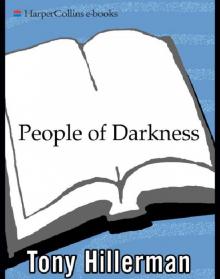 People of Darkness
People of Darkness Talking God jlajc-9
Talking God jlajc-9 Skinwalkers jlajc-7
Skinwalkers jlajc-7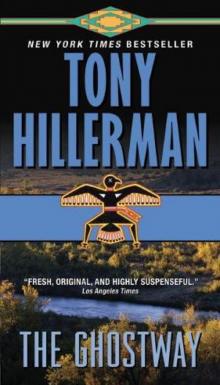 The Ghostway jlajc-6
The Ghostway jlajc-6 The Dark Wind jlajc-5
The Dark Wind jlajc-5 The Blessing Way
The Blessing Way Hunting Badger jlajc-14
Hunting Badger jlajc-14 Seldom Disappointed: A Memoir
Seldom Disappointed: A Memoir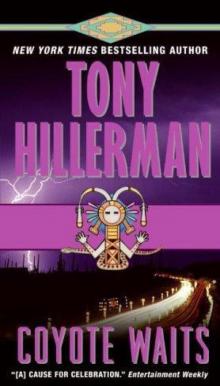 Coyote Waits jlajc-10
Coyote Waits jlajc-10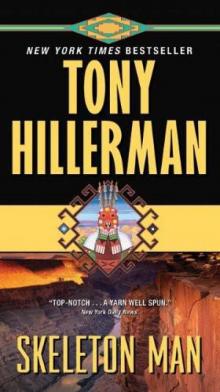 Skeleton Man jlajc-17
Skeleton Man jlajc-17 The Shape Shifter
The Shape Shifter Sacred Clowns jlajc-11
Sacred Clowns jlajc-11 The Fallen Man jlajc-12
The Fallen Man jlajc-12 The First Eagle jlajc-13
The First Eagle jlajc-13 Listening Woman jlajc-3
Listening Woman jlajc-3 The First Eagle
The First Eagle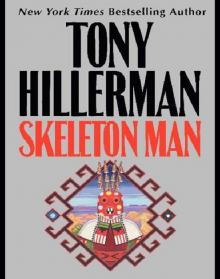 Skeleton Man
Skeleton Man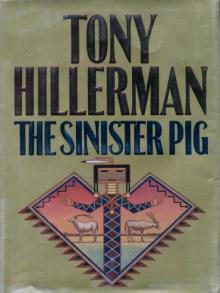 The Sinister Pig jlajc-16
The Sinister Pig jlajc-16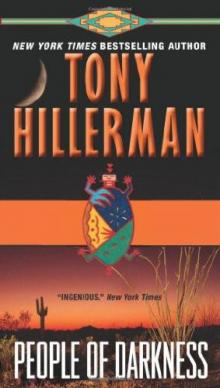 People of Darkness jlajc-4
People of Darkness jlajc-4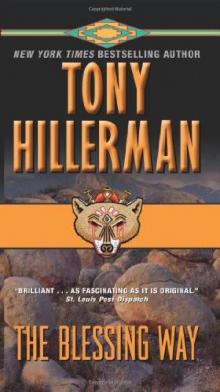 The Blessing Way jlajc-1
The Blessing Way jlajc-1 A Thief of Time
A Thief of Time The Wailing Wind
The Wailing Wind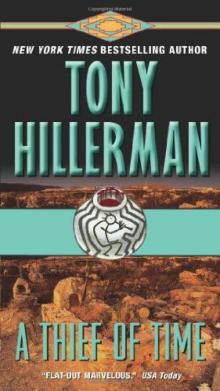 A Thief of Time jlajc-8
A Thief of Time jlajc-8 The Wailing Wind jlajc-15
The Wailing Wind jlajc-15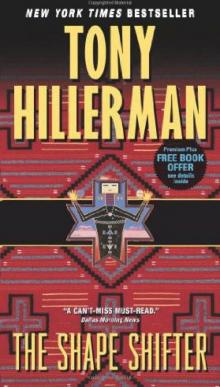 The Shape Shifter jlajc-18
The Shape Shifter jlajc-18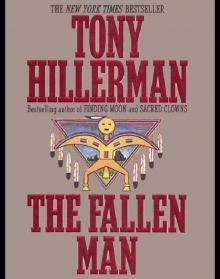 The Fallen Man
The Fallen Man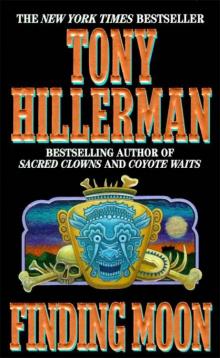 Finding Moon
Finding Moon